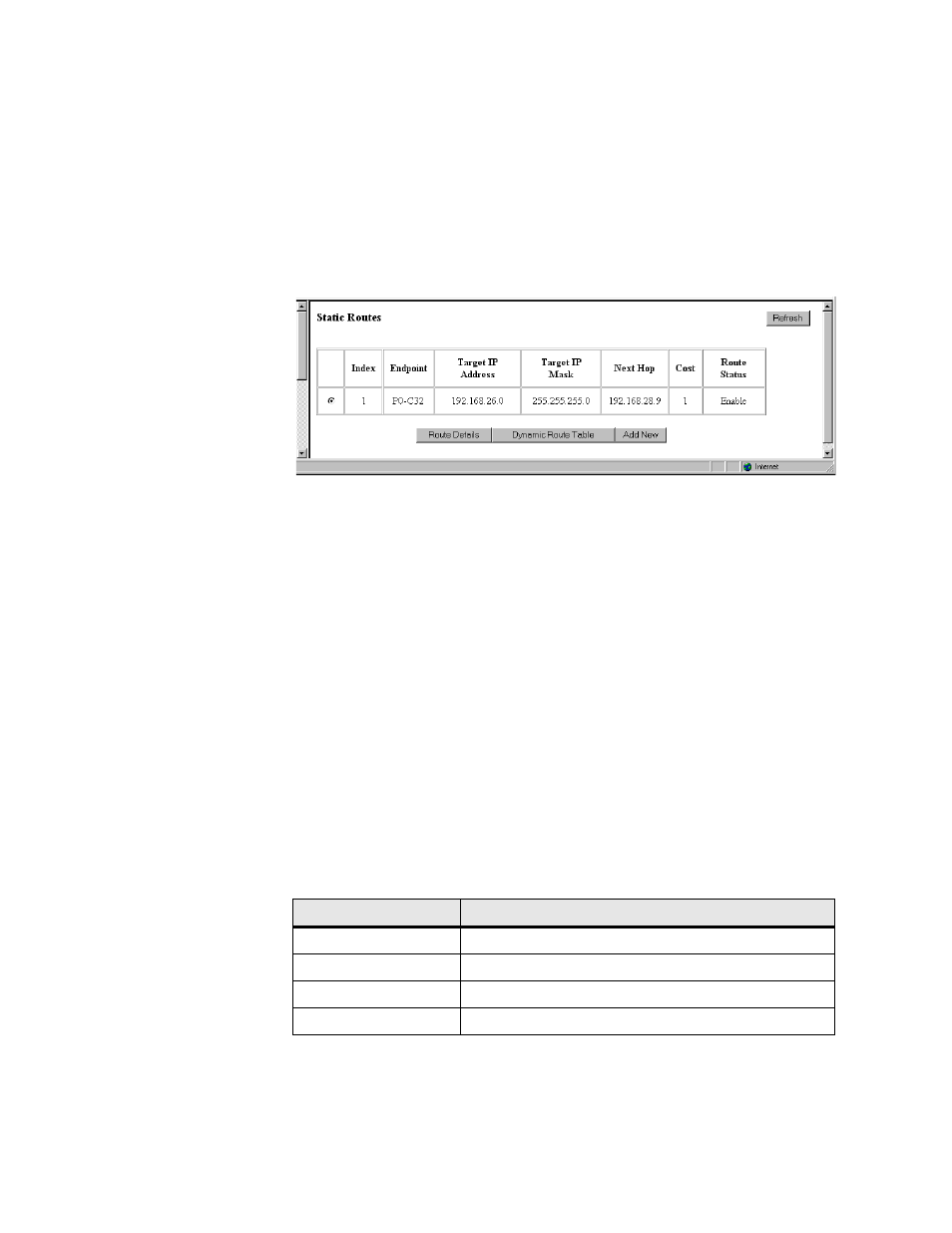Static routes screen, Static routes screen -47 – Verilink WANsuite 6x30 (34-00315.B) Product Manual User Manual
Page 75

W e b S e r v e r I n t e r f a c e
3-47
Static Routes Screen
Under some circumstances, it may not be necessary for a router to learn a
route using ordinary means such as RIP or OSPF. It is possible under these
circumstances for you to add a route to the route table of a router.
The Static Routes menu is always associated with a circuit. Access this menu by
selecting the Static Routes Table from the RIP Parameters Table on the IP
Gateway menu.
Figure 3.44
Static Routes Screen
E n d p oin t
Endpoint name (or interface) through which to send the IP packet to reach the
Target IP Address. By default, the first circuit is always the LAN circuit.
WAN circuit endpoint names are taken from the VPI/VCI number. For
example, VPI 0/VCI 32 will have “P0-C32” for an endpoint name. The pull-
down menu will display a list of VPI/VCIs actually confirmed. A given
circuit will receive/transmit data on the VPI/VCI combination corresponding
to its endpoint name.
Ta rg et IP A d d ress
Represents the target network that you want this router to reach.
Ta rg et IP M a sk
Mask of the target network.
N ex t H o p
IP address of the next device in the route.
C ost
Cost of using that route.
R o u te S ta tu s
Indicates whether a route is enabled or disabled.
The Static Routes Table screen provides the following user-activated buttons:
Button
Function
Route Details
Displays the static route parameters.
Dynamic Route Table
Displays routes learned via RIP or OSPF.
Add New
Adds a new static route.
Refresh
Refreshes data on the current page.